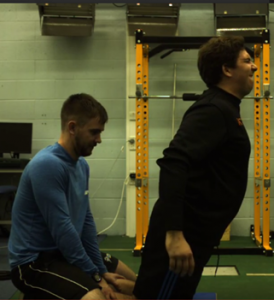Posted on June 28, 2016 by Jenny Cromack
When lifting or working against resistance, the general aim for many recreational gym goers is developing strength, hypertrophy or some form of conditioning. Whilst we have told you that for example a ‘good morning’ is a hamstring exercise, or a bench press is a pectoral and tricep exercise predominately, the truth is a little more complex. In reality we all have very unique activation patterns, these can be specific to the eccentric, and concentric portions of the lift.
Essentially, this means that different individuals based on their training history and anatomy will react very differently to the same exercises. This could also be due to subtle variations individuals made to accommodate injuries, anatomical variations, or even exercise knowledge. The classic example is squat depth, not only does depth effect activation levels but so do the following:
- Speed of movement
- Stance width
- Torso orientation
- Bar Position
- Verbal Cues
- Load
- Pausing
Whilst this may seem trivial to many, the idea that you may be utilising an exercise to, for example, develop eccentric hamstring exercise, without stimulating the muscle as effectively as completing another hamstring exercise makes it relevant and important.
When we look into exercise prescription specifics, elements such as the length-tension relationship and joint movement arms hugely influence muscle activation, and as previously discussed are individual specific. Without analysing each individual in a lab using EMG equipment, movement themes offer a suitable solution to ensure the correct stimulus is achieved.
To clarify, a movement theme in this sense refers to a desired outcome, i.e. hamstring eccentric strength. Then over a period of programs we would cycle through a variety of exercises that target the muscle, this approach ensures the stimulus is achieved. If you’re good at recording data from your sessions, you will note that when the best exercises are utilised in your training, you’re likely to experience the greatest increase in performance. in this case increased hamstring strength.
I have provided an example below on the work of Hammond et al., (2014) who examined four hamstring exercises on bicep femurs activation.
Concentric Bicep Femoris Activation (RMS Mv):
- Romanian Deadlift- 370
- Prone Leg Curl- 230
- Good Morning- 295
- Glute Ham Raise- 390
Whilst all exercises stimulated the bicep femurs, clearly the Roman Deadlift and Glutei Ham Raise in this group were superior.


